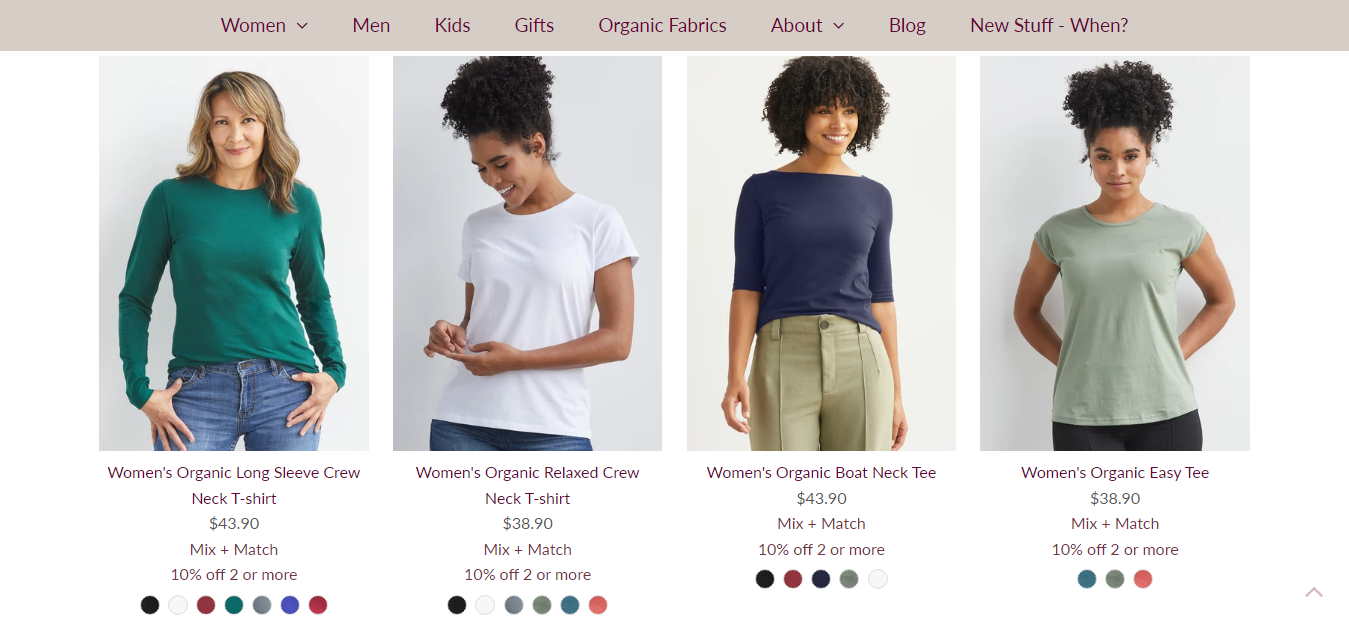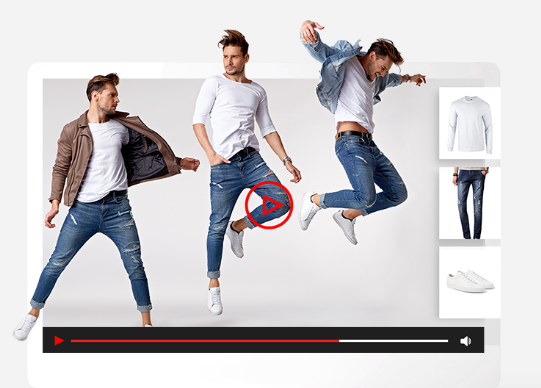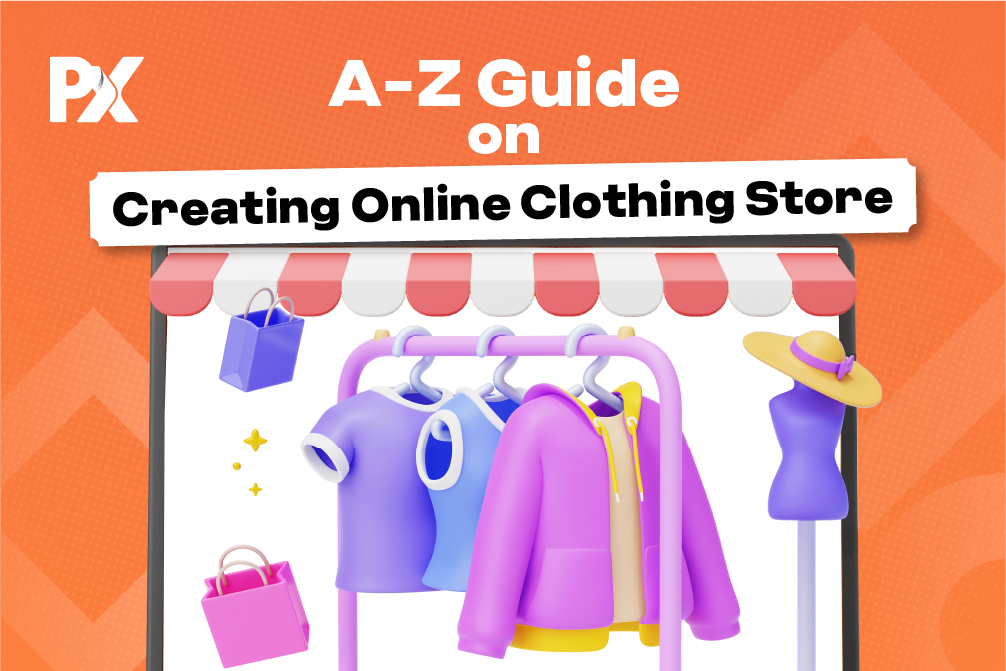Summary
There is hardly anything more fickle than fashion. The trends in this industry keep changing like the wind!
For instance, sustainability in clothing is a big hit now, customers are buying directly from social media, subscriptions, and recommerce is slowly growing.
In an age of changing trends, entrepreneurs like you have to create savvy strategies for building a clothing store to succeed in the future landscape.
To help you successfully create a strategy, we have this detailed guide on how to create an online store.
Step 1: Start by Choosing the Right Product
One of the biggest errors when entrepreneurs make online clothing stores is appealing to different kinds of audiences simultaneously.
They want to sell tees for teens, kidswear, scarves for women, socks, and hats all at once, and it is natural to do so.
But when you try to appeal to everyone, you can hardly please anyone. So, how will you avoid this error?
Find a Profitable Niche
If you want to create a clothing store online and succeed, narrow your focus to a niche.
In a market where different customers have different preferences, a niche will help you focus on a relatively small group who are actually looking for what you offer.
You can understand your target audience well, create products they want, and shape your brand in that direction.

(Statistics from Statista, GrandViewResearch)
Suppose you have already decided to create an online clothing store to sell T-shirts; dig deeper to be more specific.
What kind of tees do you want to sell, and who is your target market? Do you want to sell organic t-shirts? Or tees with superhero designs? Or plus-size t-shirts, etc.
Such a targeted approach will help you build a more focused business, and differentiate you from the general market.
Look for What’s Trending
When brainstorming for products to sell, consider current market trends. Think of products that have been trending in recent years.
For example, currently, customizable clothing, sustainable clothing, athleisure, and so on are trending in apparel.
To gain traction, you can create a sustainable fashion brand. At a CAGR of 9.0%, the ethical fashion global market is predicted to grow from $10,109.9 million in 2025 to $15,584.2 million in 2030.
Idea in action: Fair Indigo is an organic clothing brand committed to creating clothes that will last upwards of five years. Its forever organic tees category is popular among shoppers.

When selecting products for an online clothing store, it’s crucial to ensure they have the potential for generating revenue. One of the best ways to accelerate sales is by offering more value to your customers with customization using a Product Designer Tool.
Make Your Clothing Store Remarkable with a Product Designer Tool
Let customers use their creativity to customize clothing items per their unique preferences. Having a customization tool accelerates your business by engaging shoppers, and improving sales.
Hop on to the trend of custom clothing and make money online.
A t-shirt design tool allows the users to create a design for their t-shirt. It usually provides options for text, photos, and graphics for the shirt in use. One can just play around and make it as attractive as possible with the various colors, fonts, and layouts. It’s a fun way to express yourself as you make customized t-shirts for parties, businesses, or personal use.

Launch a clothing store integrated with a Product Designer Tool to offer picture-perfect customization. Click the link below to learn more.
Pay Attention to Clothing Design
Customers are extremely particular about the designs they want. When you create clothing store online, focusing on the designs of the clothes is crucial.
Now that you already know who your target audience is, the process of creating designs that resonate with them becomes easy.
There are two ways to make designs/graphics. One is to take a DIY route, downloading graphics and fonts and creating a design from scratch. The second is to hire freelance professionals.
Sell Dynamic Designs That Are Tailored For Every Customer
No matter what designs you offer, every customer has unique preferences. Some would be fine with your ready designs, while others might want to customize further to add a personal touch.
A Product Designer tool will help you cater to each customer segment. The tool’s built-in artwork management feature lets you offer print-ready artwork to end-users.
You create amazing artwork using clipart, text, quotes, etc., and import it to the tool. Further, users can customize the designs by adding text, uploading a custom image, changing the background color, etc.
The tool has a dynamic pricing system that allows you to set pricing for every customization a user carries out. Once you configure the price, a user will get a real-time pricing update during customization.
Create an online clothing store with an integrated designer tool. Let shoppers print designs on an array of printable products. Click to learn more about what products can be personalized.
Step 2: Decide on an eCommerce Fulfilment Model
Starting a clothing store online is a lot more complex than you think. Deciding on the products is just the first step. There is a lot you need to take care of in your journey. For instance,
- Where do you source products from?
- How will you find suppliers?
- Do you have a warehouse to manage inventory, or do you want to dropship products?
- How will you ship your products?
- What will the packaging look like?
- How will you handle returns, and the list of questions is endless.
When you decide on your business model, you will find all the answers to these questions. You should choose a model that helps you get started quickly and helps you grow your business.
The rest of the section covers three ways to carry out eCommerce fulfilment. There is no right or wrong option; it all depends on your business requirements and goals.
In-house Fulfilment
In-house or self-fulfillment is more like being on your own! You have to take care of all the aspects of selling online, including stocking products, managing a warehouse, packaging, shipping, etc.
Yes, this model is time-consuming and costly, but one of its biggest advantages is that it gives you absolute control over all the processes.
If you opt for this option, start planning by sourcing products for your store. If you are not going to manufacture products yourself, you have to partner with a wholesaler or manufacturer. Once you find a supplier, it’s always good to order samples to be double sure of the quality.
If you sell printable products like custom tees, hoodies, etc., you must set up a printing infrastructure. You can set up a printing studio with all the necessary equipment or partner with a printer.
You will also have to develop an eCommerce shipping strategy, in which you decide on crucial aspects like shipping fees, carriers, eCommerce packaging, and more.
Partner with a Dropshipper
“I’ve got loads of items in stock, but none seem to be popular with my customers.”
That’s one of the biggest nightmares a business owner faces.
Dropshipping is the answer if you are wondering how to set up an online clothing business and not get intimidated by heaps of inventory.
Dropshipping has become a popular model that allows you to sell products without stocking them. As far as clothing is concerned, the dropshipping model can be a major hit.
Statistics reveal that the fashion segment will likely witness positive growth from 2019 to 2025. With little investment, you can start a dropshipping business and grow your clothing business.

In dropshipping, you buy products from merchants and ship them directly to your customers instead of warehousing them.
When a customer places an order in your store, you send that order to a dropshipping supplier. They will prepare the order and ship it.
One of the biggest advantages of dropshipping is the low start-up cost as you do not hold any inventory. This also means you can try and test different products to see what’s working and what’s not.
Print On Demand
Just like dropshipping, Print on Demand is a low-risk way to sell clothes online.
A print on demand marketplace is a platform where users can manufacture and sell custom-designed products without managing or storing inventory. Customers place orders for products like t-shirts, hoodies, and caps, which are then manufactured.
The print on demand marketplace allows sellers to upload their designs, price them, and earn a commission for each sale.
A seller might find it a good deal, as there is no need for mass production or storage place. Print-on-demand platforms handle everything from printing to shipment, making it easy for anyone to start a business.
This model offers the sellers minimal upfront costs and risks while promising the consumers various items. It’s a flexible and accessible way to turn creativity into profit.
Are you planning to start your own print on demand business?
Minimum set-up costs, zero inventory, no minimum order quantities, with high profile margins.
Does all this sound like a dream? Well, not with the print on demand business model. Whether you are an artist, designer, writer, or aspiring entrepreneur, the POD model is your alternative way to eliminate the huge investment and risk associated with inventories.
Step 3: Choose an eCommerce Platform
You need to build your own store to list products and accept payments. The first step is to choose an e-commerce platform.
There are many beginner-friendly options available, like Wix. They do not require technical expertise and are simple to use and set up.
However, any business owner who is futuristic and aims to grow their business needs to invest in a platform that gives them the flexibility to scale.
Considering this, popular options among business owners include Magento, Shopify, WooCommerce, 3DCart, and Prestashop.
All these platforms have pros and cons and require an in-depth analysis. The following are some important factors to consider when choosing the best platform for an online clothing store.
- A robust catalog that fulfills the requirements of your business
- Enables you to offer website personalization
- A platform that allows integration with fulfilment companies
- Built-in customer review system for ratings and reviews
- Have multiple payment options and eCommerce analytics
- Integration with Facebook to sync your products with Facebook, Instagram
Another important thing to look for is the platform’s ability to enable product customization. If you are considering selling custom products, you would want an easily integrable customization software compatible with all eCommerce platforms.
Designer Tool by PrintXpand works seamlessly with major eCommerce products like Magento, WooCommerce, Shopify, Prestashop, PHP, Opencart, and so on. Take a product tour to learn how the tool works in depth and its features.
Step 4: Prepare Your Online Store
Once you have your store’s foundation ready, you will have to work on making it appealing. This section covers everything you need to know to create your company’s visual identity and offer a seamless shopping experience.
Focus on Brand Identity
To be successful online, it’s important to link what you’re selling with the people you’re selling to. That’s why building a brand identity is key.
Your brand is how people perceive it at every touchpoint. It includes everything from a recognizable name and logo to the message you are communicating.
Begin by choosing a name for your brand. Based on the kind of business you want to start, choose a simple and easy-to-remember name.
Logo and brand color and fonts are other important things to consider when building a website.
When creating a visual identity, ensuring consistency across all platforms where your brand will have a presence is good.
Do Not Underestimate Shopping Experience
Having a well-performing website is as important as having a visually appealing website. Enhancing user experience leads to better ranking, more leads, and increased revenue.
Start with creating a navigation that guides users through your website. Categorize your store effectively for better navigation.
For example, a business offering uniform offers users the choice between safety, work tshirts, scrubs, etc. Further, these categories fall into subcategories like long sleeve, sleeveless, meshed, etc.
Also read: How To Start Uniform Business Online
eCommerce Features For Extraordinary Shopping Experiences
- High-quality Images and VideosDisplaying pictures is a must-have in your eCommerce store. However, if you want to take a step further, consider having videos too. Videos are like a virtual salesperson. They help in showcasing every aspect of your products. For instance, you can create a video and use that to show how good the fabric is, how shoppers can style a clothing item, behind the scenes of how apparel is made, etc.

(Trend of Shoppable Videos – Source)
- Suggested Products Based on Buyer’s PreferencesTo deliver a more personalized experience on your store, consider including a ‘Related Items’ feature. Phrases like ‘you might like this,’ ‘related items you have viewed’, etc. help shoppers to make better purchase decisions.
- Implement product visualization in your storeProduct visualization has the potential to increase sales, and reduce returns. There is an array of visual content options like augmented reality, virtual reality, and 3D renderings. One of the growing trends in eCommerce is the usage of interactive configurators. It enables shoppers to configure products in real-time. Get more information about configurators here.

Turn Your Online Store Into a Design Studio
The eCommerce industry is an extremely competitive market. There are hundreds of websites selling apparel online.
Even the smallest price drop on your competitors’ website or an offer can take away your potential shopper.
You must explain to your customers why your company and product are better or different.
A Product Designer Tool helps you offer unique benefits to your customers by giving them the power to customize products.
Go beyond listing products and offer a place to design products
Instead of just listing products on your website, you can provide shoppers with another option of a design studio.
For instance, CustomInk is a US-based retail company. They have a design lab with a collection of artworks, fonts, etc., that shoppers can access to design clothes they love.

This extraordinary experience of creating dynamic products leads to more satisfied and loyal customers.
Like popular brands, you too can offer an incredible shopping experience even though you are just starting out.
Check how you can deliver a personalized experience on your online store.
Step 5: Launch and Promote Your Online Store
Now that you have everything ready, it’s time to attract customers. Drive traffic to your online store through organic presence. This will require you to optimize your website for Search Engine Optimization.
Familiarize yourself with keyword research to maximize your SEO efforts. Pay close attention to on-page content such as product titles, descriptions, images, etc.
Also, ensure you have other ranking factors, including mobile experience, website speed, etc.
Second, do not forget social media. You can think beyond just social media posting and include selling on social media in your marketing strategy.
You can set up an account on platforms like Instagram and Facebook, and shoppers can purchase directly from the social media app.
For example, you can sell your products on Instagram using Instagram Shopping. It is a set of features that allows you to make your products easy to shop.

You can create and share shoppable content on your Instagram feed and stories. Moreover, the posts you mark as Shop will appear on the Explore page.
When selling clothing items, offers and discounts work like magic. Shoppers hardly want to miss an opportunity to get 50% off or free shipping.
You can use tactics like special prices, final chances, etc., to instill FOMO and grab your audiences’ attention.
Turn an Ordinary Store into a Design Hub to Mint More Money
Building a brand that customers keep talking about takes time. With PrintXpand, you can successfully launch a clothing store and make money with a USP of product customization.
Using a Product Designer Tool, you can offer customers a design lab where they can unleash their creativity to create stunning designs. The tool is compatible with major eCommerce platforms and works with various products.
Irrespective of the user’s technical expertise, they can use the tool without any hassle. The tool’s intuitive interface ensures a user can complete customization in less time.
The tool offers you all the freedom you need to scale your business in the future. You can quickly get started with functionalities that support your business requirements. Gradually, as your store expands, you can set and change the tool’s layout.
Businesses across the globe have built and grown their business with our designer tool. Not just that, we have everything you need to take care of your end-to-end business operations using print ERP software.
We can’t wait to assist you in your entrepreneurial journey! Let us take care of the technical part of running a business online while you focus on building your brand. Share your project details with us, and we will get back to you.
All product and company names are trademarks™, registered® or copyright© trademarks of their respective holders. Use of them does not imply any affiliation with or endorsement by them.




![5 Benefits of Selling Custom Photo Albums [Bonus: How to Sell] blog img](https://www.printxpand.com/wp-content/uploads/2023/05/Albums-Feature-Image-40421.jpg)